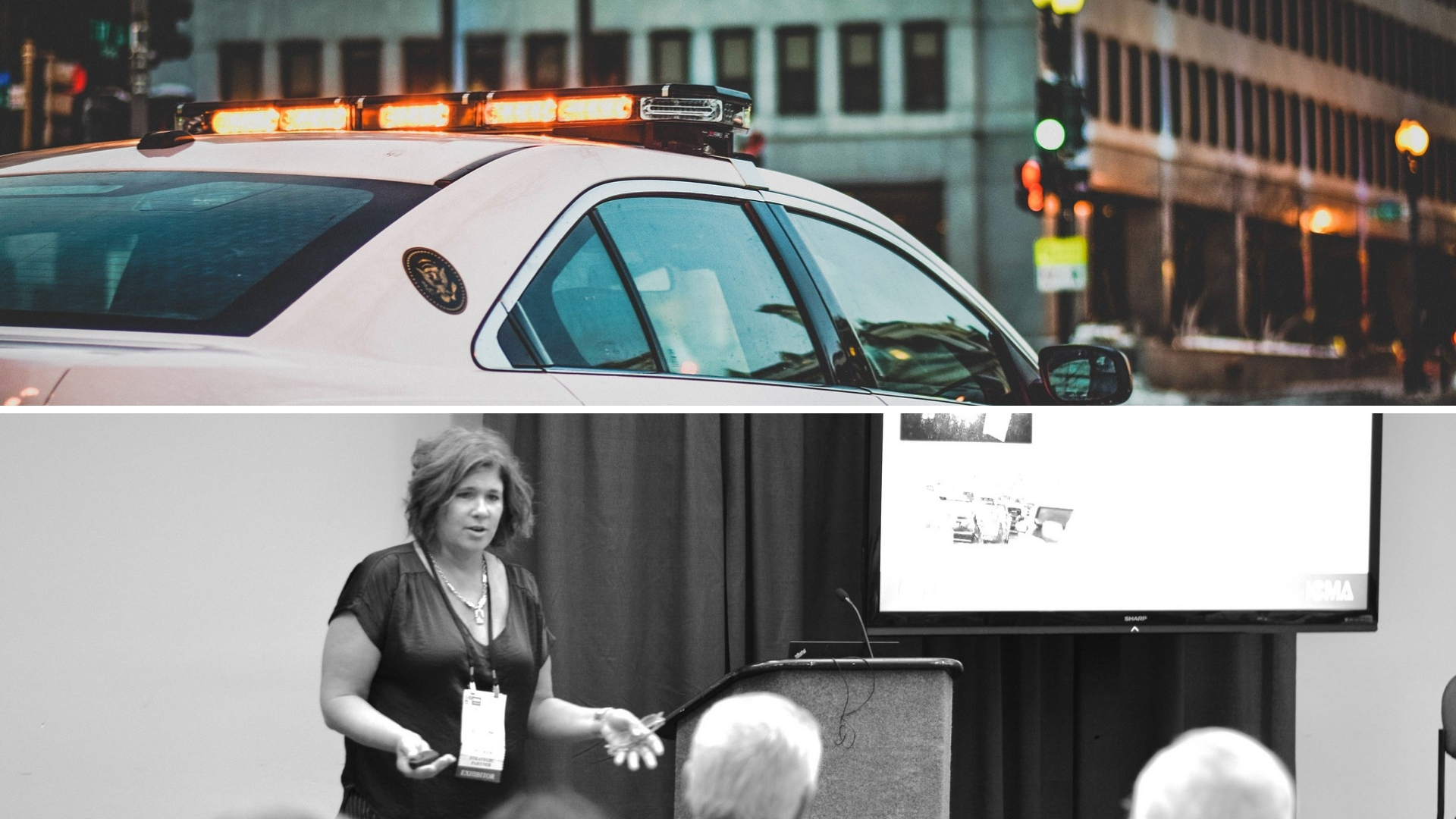Police Study Report: Opinions of Law Enforcement Differ Between Races
By Polco on January 1, 1970

- By Brian Smith, Graphics by Parker Quinn -
White and black Americans’ opinions of law enforcement have changed significantly during the last several years, a new police study report shows.
A greater number black Americans are wanting police to focus more on creating positive, proactive community relationships. This societal shift comes after recent protests over police violence and calls for police reform.
This finding is one of many results from a national survey on policing services. The police study report, from The National Police Services Survey (The NPSS), reveals significant differences between black and white Americans’ opinions on law enforcement. The differences in ratings between races on issues such as crime, trust in police, ethics, feelings of safety and priorities for public safety have changed greatly over the last two years.
A disparity between how black and white residents experience police has always existed, said Michelle Kobayashi, Sr. VP of Innovation for National Research Center (NRC) at Polco. But research indicates new trends. One such change is that white residents have become more empathic about the relationship police have with black residents, she said.
“Now in 2020, people from majority groups are understanding more of the experiences of people of color. More people these days agree that it’s important for us to reach out to folks in the community of all backgrounds, ethnicities and races to make sure that we’re representing everyone’s values in community policing,” Kobayashi said.
Michelle Kobayashi has designed and conducted scientific survey research, analyzed and reported results to governments for more than 30 years. She says the amount of change between the 2018 and 2020 survey data are noteworthy.
Analyzing Results from The National Police Services Survey
This police study is the second of its kind. National Research Center (NRC) at Polco conducted two nationwide surveys — one in 2018 and 2020 — and compared the results. Data from these surveys are weighted to represent the opinions of millions of Americans.
These data come from The National Police Services Survey (The NPSS). Expert survey scientists and law enforcement thought-leaders developed this survey. Leaders from the Bureau of Justice Assistance (BJA) Executive Session on Police Leadership (ESPL) also helped guide the creation of The NPSS. It gives insight into resident views on community safety services and values, and helps align police and public priorities.
Residents Change Ratings of Police, Crime
Overall, residents changed many of their perceptions of public safety factors over the last two years. In 2018, about 80 percent of all residents were satisfied with the quality of police services in their community. That figure dropped by more than 23 percent in 2020.
Both studies ask residents how much of a problem various crimes or issues are in their communities. In 2018, black and white residents agreed much more closely on those issues than in 2020.
In 2020’s study, black residents rate most facets of crime more of a problem than white residents. White residents either rate those facets as less of an issue than before, or about the same. Those issues include drug abuse, domestic violence, school safety, disorderly conduct, gun violence and more.
About half of black residents indicate that lack of knowledge about public safety issues is a problem. That’s more than a 10-percent increase from 2018. Only about 30 percent of white residents rate that aspect as a problem in both surveys.
To counteract that lack of knowledge, residents and police must collaborate on prioritizing safety issues for the community, said Chief Anthony Holloway of the St. Petersburg, Florida Police Department. “I think you have to ask that community what they perceive safety as,” he said.
Chief Holloway has certainly seen relationships between diverse residents and police evolve over the years, since he began his career 35 years ago. As a successful leader in the field, he’s taught best practices in law enforcement to government and community organizations nationally and internationally. He also serves multiple state level organizations dedicated to promoting diversity and advancing racial and ethnic equity, on the state level.
Both Races Report Decreased Trust in Law Enforcement
In 2018, black and white residents differed significantly in their trust of police. White Americans rated aspects of trust highly. But black residents rated their trust in police significantly lower — by as much as about 30 percent less in some areas.
In 2020, however, residents of both races have become more aligned in their opinions, yet a sizable gap persists. Across the board, both races rate their trust in police significantly less than before.
Now, less than half of black residents positively rate their levels of trust in police. These issues include acting within the law, being trustworthy, using appropriate force, and being a positive influence in the community.
Only about 30 percent of black residents feel that the police care about the well-being of the people they work with, and that police officers are held accountable for their actions.
White residents have reduced their trust in police in all cases by about 20 percent or more. Most residents who are male, or white, or homeowners, or who live in higher income households tend to give the most favorable ratings to safety and police service.
Black Residents Want More Police Community Connections
Both races shifted their opinions of what law enforcement’s priorities for the community should be, between 2020 and 2018.
In 2018, black and white residents aligned more closely on the importance of issues such as school safety, drug enforcement, working with residents to solve neighborhood problems and more.
In 2020, however, black residents rated more priorities higher than white residents. Black residents placed more importance on issues such as increasing connections with the community, and working with residents to solve neighborhood problems.
Holloway said he’s found that police and residents generally agree on what they want. “When you talk to the people in the community, they don’t want to become victims of a crime,” he said. “So they want to know what you are doing, how exactly you are doing it and how can we help you and work together.”
Policing in Partnership With All Residents
Holloway said change will come from officers becoming more proactive in the community. From that steady, positive presence comes trust, he said.
“You’ve got to be there and stand and talk to people in the community,” Holloway said. “I’ll go back to a Dr. [Martin Luther] King Jr. quote that people fear each other because they don’t know each other and they fail to communicate together. That’s the breakdown right there.”
Kobayashi said police departments and government officials should use this data to help them collaborate more with people of all backgrounds.
“A goal would be to collaborate, communicate and be transparent,” she said. “Speak with the people who have not traditionally been at the decision making table. Invite the black community, where there have been more breakdowns in relationships. Ask a more representative group of residents to help make decisions about priorities, resource allocation, performance measurement, accountability and more. This collaboration will help reduce the disparities in police trust and perceptions over time.”
For more information, or to conduct The National Police Services Survey in your own community, click here.
Related Articles
Popular posts
Sign-up for Updates
You May Also Like
These Related Stories

New Police Study Shows Significant Changes in American Opinions on Public Safety Services

Examining Public Opinion on Today's Safety Priorities




